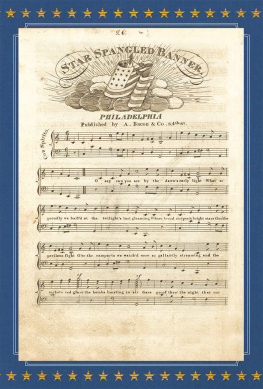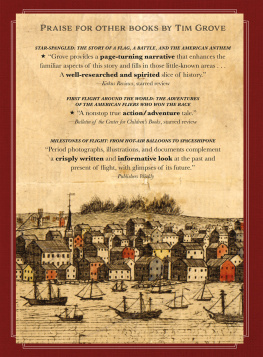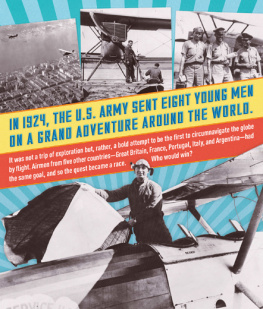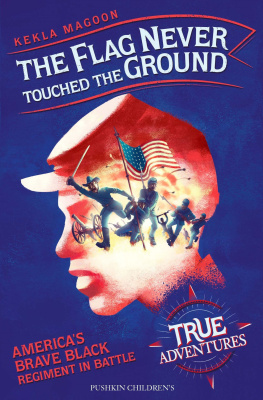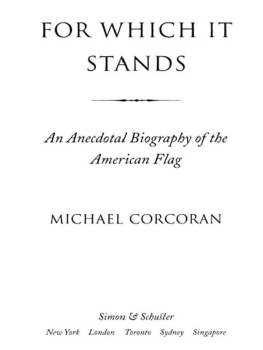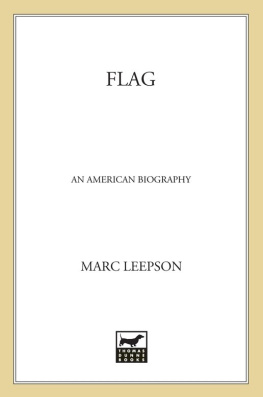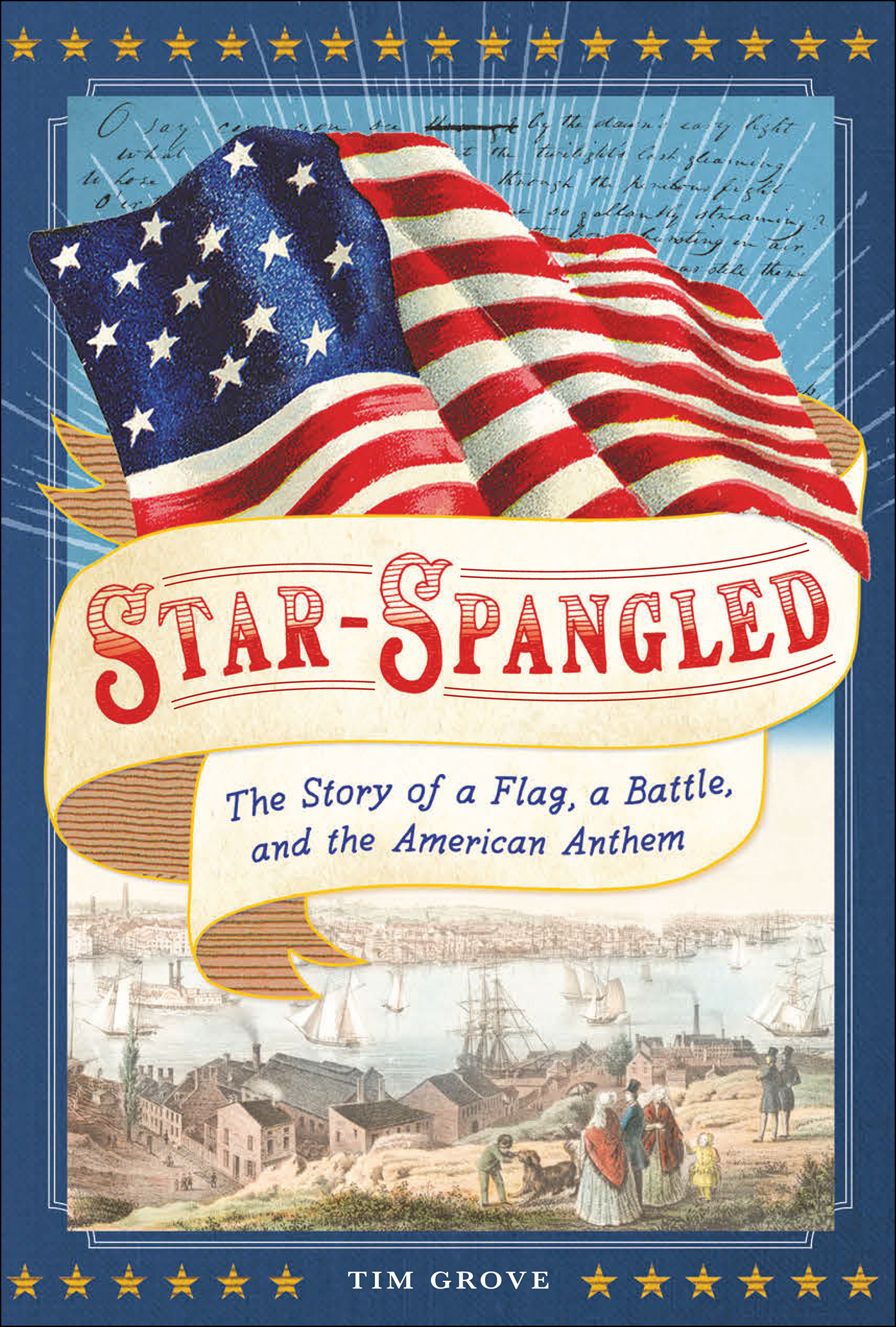
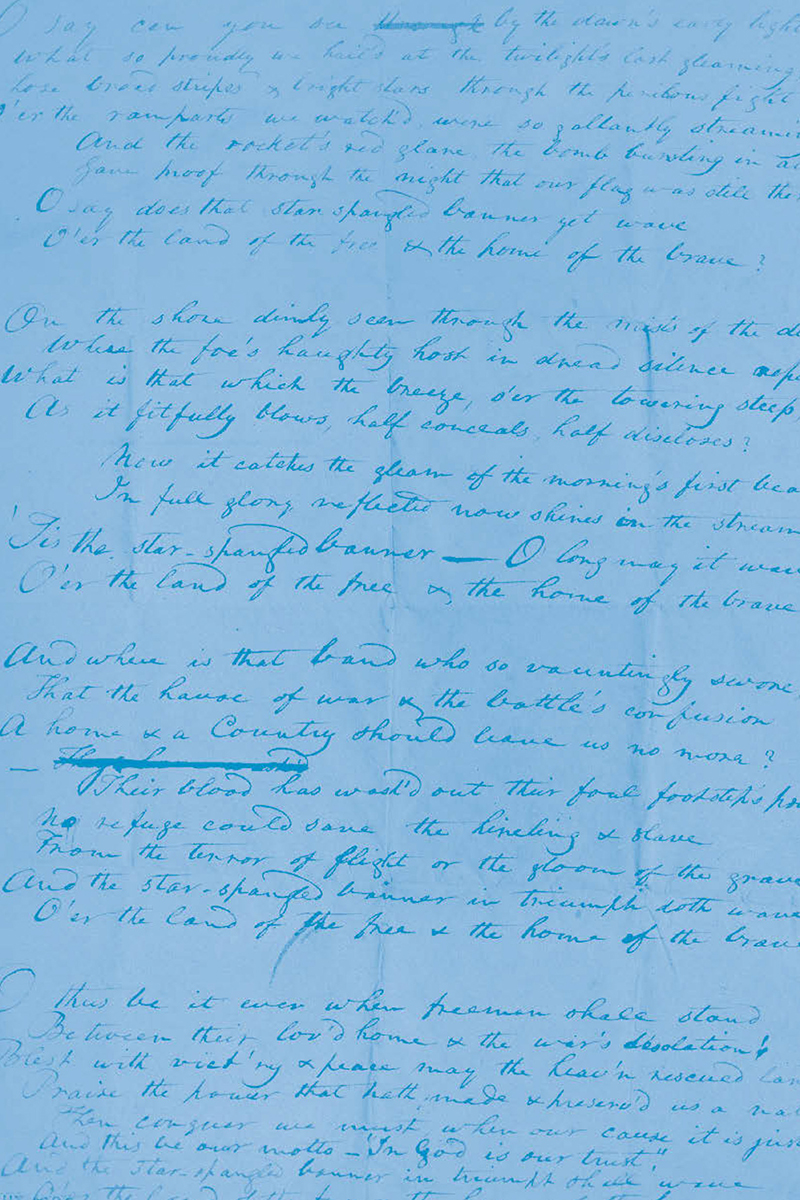

Cataloging-in-Publication Data has been applied for and may be obtained from the Library of Congress.
ISBN 978-1-4197-4102-9
eISBN 978-1-68335-852-7
Text copyright 2020 Tim Grove
Edited by Howard W. Reeves
Book design by Melissa Jane Barrett
Endpapers are photographs of Francis Scott Keys original draft of the poem that inspired Americas national anthem; courtesy of the Library of Congress. The decorative elements on the title page and chapter openers were created using various period graphic ornaments.
Published in 2020 by Abrams Books for Young Readers, an imprint of ABRAMS. All rights reserved. No portion of this book may be reproduced, stored in a retrieval system, or transmitted in any form or by any means, mechanical, electronic, photocopying, recording, or otherwise, without written permission from the publisher.
Abrams Books for Young Readers are available at special discounts when purchased in quantity for premiums and promotions as well as fundraising or educational use. Special editions can also be created to specification. For details, contact specialsales@abramsbooks.com or the address below.
Abrams is a registered trademark of Harry N. Abrams, Inc.

ABRAMS The Art of Books
195 Broadway, New York, NY 10007
abramsbooks.com
CONTENTS

List of
CHARACTERS
AMERICAN
MAJOR GEORGE ARMISTEAD
the commander of Fort McHenry
DR. WILLIAM BEANES
a physician and leading resident of Upper Marlboro, Maryland
THOMAS KEMP
a ship builder and shipyard owner in Fells Point, Baltimore
FRANCIS (FRANK) SCOTT KEY
a lawyer from Georgetown
MARY PICKERSGILL
a Baltimore business woman
JOHN SKINNER
a prisoner exchange agent
MAJOR GENERAL SAMUEL SMITH
a Maryland senator and lifelong Baltimore citizen in charge of the defense of Baltimore
BRIGADIER GENERAL JOHN STRICKER
the leader in charge of the American army at North Point
BRITISH
MIDSHIPMAN ROBERT BARRETT
a fifteen-year-old sailor
COLONEL ARTHUR BROOKE
General Rosss second in command
VICE ADMIRAL SIR ALEXANDER COCHRANE
the top British military leader in the Chesapeake Bay
REAR ADMIRAL SIR GEORGE COCKBURN
the second in command of the British naval forces in the Chesapeake Bay (after Cochrane arrived)
LIEUTENANT GEORGE ROBERT GLEIG
an eighteen-year-old Scottish soldier
MAJOR GENERAL GEORGE ROBERT ROSS
the British army commander in charge of land forces
These two British admiralsCochrane and Cockburn have similar names. Because it is nonfiction, the names cant be altered, so pay special attention to keep the characters apart.
PREFACE
Everything that happens in this book is true, and all the characters were real people. The book is based on historical evidence. Historians try to put a puzzle together from the many pieces of historical evidence they find while doing research. Sometimes there are questions and holes in the story for which the evidence doesnt provide answers. What did Thomas Kemp look like? No portrait or description exists. Or, where were he and Mary Pickersgill during the Battle of Baltimore? They didnt leave a record of their activity, or if they did, the record has been lost. What did the former slaves who fought for the Americans think? What did the formerly enslaved people who sided with the British think? Most enslaved people were not taught to read and write, so few written records provide this kind of information. Charles Ball is an exception, and I wanted to include his story because he provides a first-person perspective.
I chose to tell this story from different perspectives because all history events can be viewed from more than one angle. At times, historical evidence contradicts itself and historical witnesses offer different versions of the story. When there is a contradiction, historians must weigh the validity of each source and decide which evidence is stronger or which voices to include. Every person and event in the past is complex and layered and worth looking at from multiple directions. Thats why history is so fascinating! I have attempted to show you some of the questions that historians ask and to provide a glimpse into the detective work that I think makes researching the past so fun. Be sure to read the Notes section for additional information.
INTRODUCTION
You know the national anthem. O! Say, can you see? I bet you could hum it right now. Youve probably sung it at a sporting event, or during the beginning of a concert. Maybe youve watched the Olympics and heard the anthem play when an American wins gold. Most, if not all, countries have a national anthema song that represents them. Many anthems have words: Some proclaim values such as courage and loyalty that describe the countrys citizens. Frances popular anthem, La Marseillaise, is a call for citizens to fight for freedom against oppression. The British anthem is a prayer for the health of the reigning king or queen. Anthems inspire patriotism and pride in ones country. The United States of Americas anthem, unlike most, tells the story of a historic event. While many Americans know the words, they dont all know the story. This book tells that story through the eyes of people who lived it, including Mary Pickersgill, Thomas Kemp, George Cockburn, Francis Scott Key, Samuel Smith, and Alexander Cochrane. They lived very different lives, yet their stories would become woven together into one grand narrative. At the center of the story is a flag that would one day be called the Star-Spangled Banner. Many years ago it flew over a fort in the city of Baltimore during a battle with Great Britain.
The Battle of Baltimore was one of many battles during the War of 1812, a confusing name because although the war began that year, it lasted until 1815. During the war, fighting took place in various parts of the North American continent, mostly in four main areas: along the CanadaUnited States border and into southern Canada, at spots along Americas western boundary, in the Chesapeake Bay region, and along the Gulf Coast in the South.
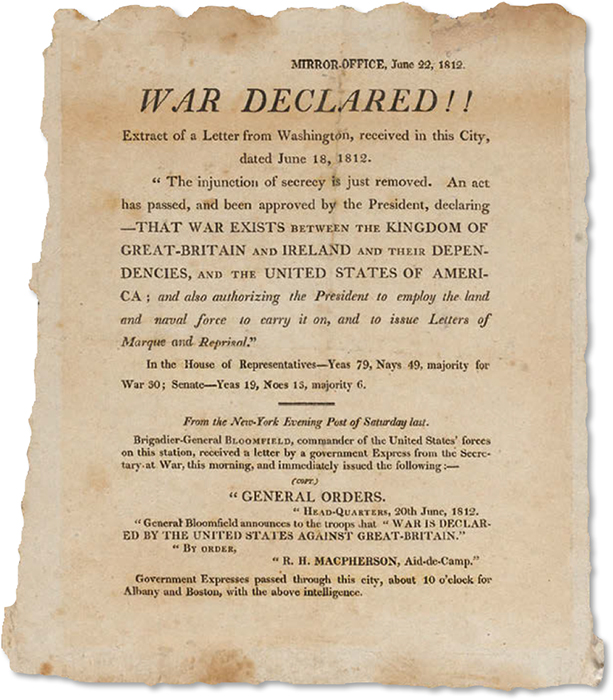
A news bulletin in the form of a poster called a broadside announced the declaration of war against Great Britain, June 22, 1812.
Although today Americans and Canadians view it as a separate war, British people often consider the War of 1812 part of a larger conflict the United Kingdom and other European countries fought against France. Thats if they think of it at all, because in British history the War of 1812 does not hold much importance. In North American history, the war is important because it confirmed the United States of Americas independence from Great Britain. It was a key event in ensuring Canadian freedom as well, from the United States. Canada was not yet its own country, but was made up of separate colonies that were part of the British Empire. Some politicians in the United States wanted to expand American territory by capturing parts of Canada.

